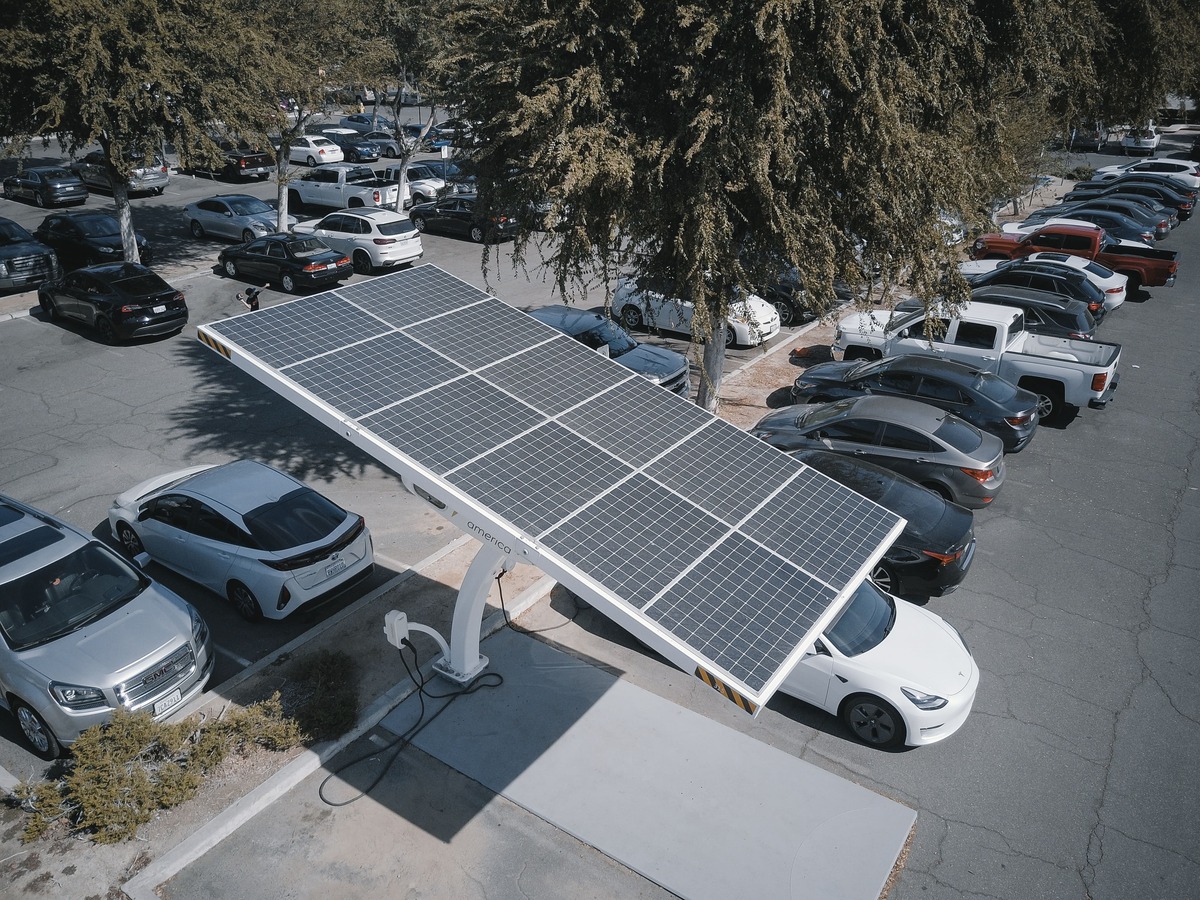
Home / EV Charging News / Why Are EVs Perfect for the Healthcare Industry?
Electric Vehicles (EVs) are a great option for personal transportation, but they also provide an outstanding mobility solution for several sectors, including the healthcare industry. There are many reasons supporting the inclusion of EVs in a hospital, including environmental and health reasons.
If you are interested in learning more about why EVs are so great in the healthcare industry, you will find all the information you are searching for in this article. Here we analyze the importance of EVs for the healthcare industry, its benefits for the sector, and more.

Figure 1: Hospital with EV charging
The leaders of the healthcare industry including doctors, hospital directors, and other healthcare personnel, should always lead by example. This includes promoting healthy practices, like the use of EVs, which can help to reduce disease threats for the society.
Around 53,000 U.S. citizens die every year due to Internal Combustion Engine (ICE) vehicle emissions and at least 361,000 persons worldwide. Pure EVs or Battery Electric Vehicles (BEVs) can reduce this by featuring zero tailpipe emissions, producing minimum Carbon Dioxide (CO2) emissions compared to ICE vehicles.
Reducing air pollution by using EVs can improve air quality, being extremely important since good air quality is a general well-being necessity for patients in a hospital, healthcare personnel, and especially for persons with pre-existing respiratory conditions.
BEVs do not only promote well-being by improving air quality, but they also promote good environmental practices by reducing the carbon footprint of car drivers. Promoting an eco-friendly environment is a synonym for well-being and improves the image of a healthcare center.
Considering these reasons, it is a recommended practice for hospitals to install EV charging stations at garages and parking lots of the facility. This will give patients and healthcare personnel that spend several hours a day in the facility, access to EV charging for their vehicles.
Another important decision that can be considered by a healthcare facility is acquiring an EV fleet. Doctors and healthcare professionals visit patients, potential providers, and more every day. An EV fleet can greatly reduce the driving cost for a hospital fleet while improving air quality in the facility at the same time.

Figure 2: EV Ambulance
As previously addressed, Electric Vehicles are a great option for the healthcare industry. In this section, we list the most important benefits they provide for it.
One of the main EV benefits for the healthcare sector is the improvement of air quality, and consequently, public health. ICE vehicles release CO2, but they also release Nitrogen Dioxide (NO2), Ozone (O3), Carbon Monoxide (CO), Sulphur Dioxide (SO2), and other fine particles. These pollutant agents can potentially cause lung irritation, asthma, fatigue, and oxygen deprivation, and promote respiratory diseases in general.
Switching from ICE vehicles to EVs will positively impact the well-being of personnel and patients in hospitals by reducing those agents in the air.
The personnel of a healthcare facility usually consider the place their second home, since most of them spend a great percentage of their day within it. Providing them with access to EV charging will make it easy for them to charge their vehicles during those work hours in the facility, even boosting morale by granting them additional benefits.
Healthcare facilities should lead by example, which is why acquiring EVs and granting access to EV charging can positively impact the image of any healthcare facility. This is a result of the healthcare facility following good environmental practices by replacing ICE vehicles with EVs, showing their commitment to the environment and the well-being of the general public, considering the positive impact of EVs on those two fronts.
Any healthcare facility with a constant coming and going of patients should provide them with quiet and tranquility. Reducing noise pollution by replacing ICE vehicles with EVs can greatly improve the medical facility in this aspect since EVs are technically noiseless and allow healthcare personnel to come and go without disturbing people visiting or staying in the place.

Figure 3: EV charging with green energy
The healthcare sector is one of the first interested parties in improving the well-being of the public. Considering that the transport sector is responsible for 27% of Greenhouse Gas (GHG) emissions and the electricity sector for another 25% of those emissions, green energy in combination with electric vehicles has the potential to reduce GHG emissions and air pollution.
Promoting the acquisition of EVs to be recharged with green energy, has the potential to greatly reduce around 50% of GHG emissions. This would lead to a positive impact in the well-being of the general public by improving air quality and reducing potential respiratory diseases, but it also has the potential to provide other positive health benefits by mitigating climate change. Climate change is responsible for at least 1,300 yearly deaths in the U.S. and it is expected to cause around 250,000 deaths worldwide from 2030 to 2050, which is why enabling positive actions via electric vehicles is one of the best ways to reduce the impact of this phenomenon that affects us all.



